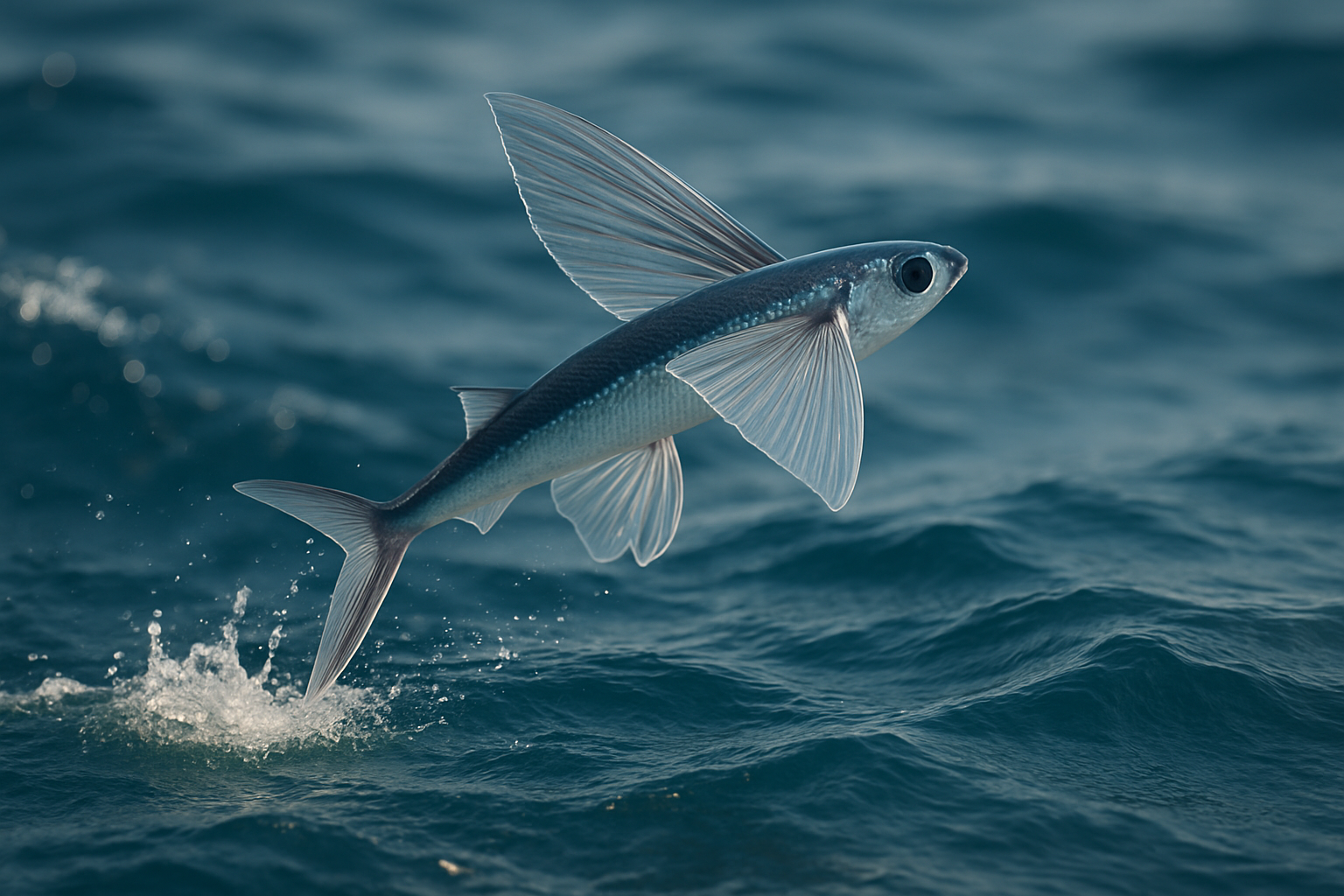Aquatic Acrobats: The Fascinating World of Flying Fish
Soaring above the waves, their fins glinting in the sunlight, flying fish are nature's aquatic acrobats. These remarkable creatures have captivated sailors, scientists, and ocean enthusiasts for centuries. From their unique adaptations to their crucial role in marine ecosystems, flying fish offer a window into the wonders of marine biology and evolution. Join us as we dive into the extraordinary world of these airborne swimmers, exploring their biology, behavior, and the challenges they face in our changing oceans.

Anatomy of an Aerial Fish
The anatomy of flying fish is a marvel of natural engineering. Their most distinctive feature is their oversized pectoral fins, which can span up to 70% of their body length. These fins are supported by elongated fin rays, giving them the necessary structure to generate lift. Additionally, flying fish have a streamlined body shape, a flattened ventral surface, and an asymmetrical tail fin with a larger lower lobe. This unique combination of features allows them to build up speed underwater before launching into the air.
The Physics of Fish Flight
When a flying fish takes to the air, it’s not just a random leap but a carefully executed maneuver. As they approach the water’s surface, they can reach speeds of up to 37 miles per hour. Upon breaking the surface, they spread their pectoral fins and begin to glide. By vibrating their tail fin rapidly, they can gain additional lift and extend their flight. Some species can cover distances of up to 655 feet in a single glide, staying airborne for up to 45 seconds. This impressive feat is made possible by their ability to trap a thin layer of air between their fins and body, creating a wing-like surface.
Species Diversity and Distribution
There are about 40 known species of flying fish, distributed across the tropical and subtropical waters of all oceans. The largest species, the Spotfin flying fish (Cheilopogon furcatus), can reach lengths of up to 18 inches. While most flying fish species inhabit open ocean environments, some are found in coastal areas and even freshwater systems. The diversity of flying fish species showcases the adaptability of this unique group, with variations in fin size, coloration, and flight capabilities across different species.
Ecological Importance and Human Interactions
Flying fish play a crucial role in marine ecosystems as a vital link in the food chain. They are a primary food source for many larger predatory fish, seabirds, and marine mammals. Their ability to leap out of the water also makes them vulnerable to being caught by seabirds, creating a unique predator-prey dynamic that spans both air and sea. In some regions, flying fish are also an important food source for humans. The roe of flying fish, known as tobiko, is a popular ingredient in sushi and is considered a delicacy in many cultures.
Conservation Challenges and Future Prospects
Like many marine species, flying fish face numerous challenges in today’s changing oceans. Climate change, overfishing, and pollution all pose significant threats to their populations. Rising ocean temperatures can affect their distribution and breeding patterns, while plastic pollution can be mistaken for food, leading to health issues. Conservation efforts are underway to better understand and protect these unique creatures. Research into their migration patterns, breeding habits, and population dynamics is crucial for developing effective conservation strategies.




